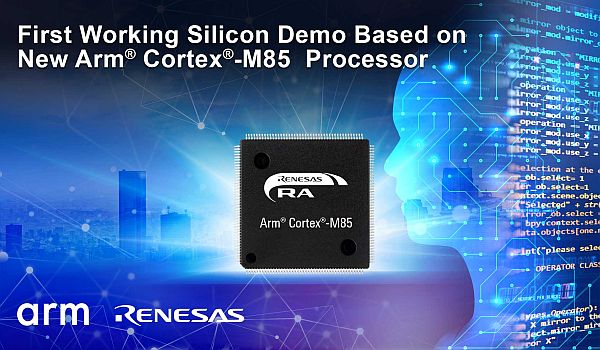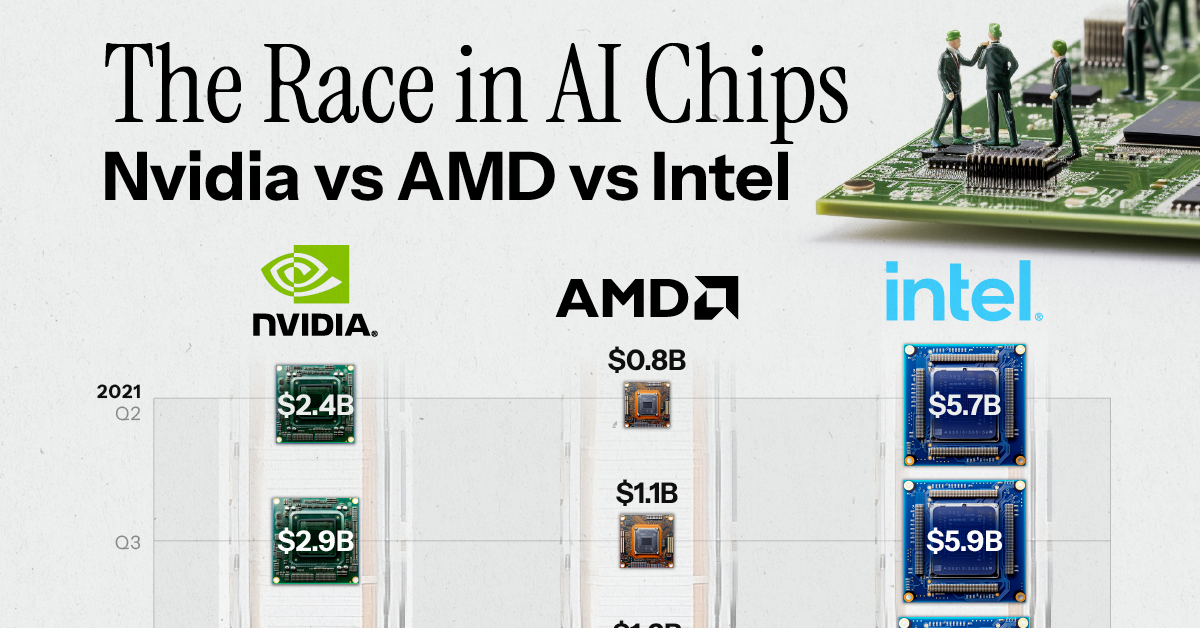Bravo
If ARM was an arm, BRN would be its biceps💪!
There's hearsay and there's heresy, and Qualcomm ain't hearsay.
If I had a dollar for every time I've been sent to the naughty corner, I'd be disgustingly wealthy.
There's hearsay and there's heresy, and Qualcomm ain't hearsay.
The same issue in the energy space.
There’s technology available to supercede oil, gas, coal, and wind generated power, and has been since the mid 1900s.
Unfortunately it’s not whether the technology is good. It’s whether it gets adopted.
BRN clearly have the lead in the AI Edge space, but they are busting every valve to try to get it used and adopted, which is the ultimate challenge in my view..
They probably need to get the right powerful people invested in BRN to then get it the adoption that would make it ubiquitous.. IMO DYOR
Not sure if you have seen but NVIDIA’s 45% profit margin is a cost to everyone else. There is an immediate demand to reduce power consumption/compute requirements and therefore operating costs.Just putting it out there. But just watched the TENNs video out by brainchip I think they highlighted the main reason we are where we are. "Generations ahead of the industry". What we have seems magical, but does the industry need it today? It seems it will come, but is it a case that we are too far ahead and the industry is saying we don't need to invent the wheel again just yet. I think we need Megachips or the like to come out with something so needed that others must follow. Yes the cloud is getting busy, but are we providing a solution not needed yet? Just a few thoughts, but maybe I'm not understanding enough, maybe the need is now?
With Vodafone involved, chances are above average imo@Diogenese this is one for you mate. Looks and sounds like Akida but is it?
https://www.nordicsemi.com/News/202...160-in-the-Vodafone-Asset-Solar-asset-tracker
Thanks to Daniel on one of the Facebook group chats for finding this
Yeah I totally agree sb. My original comment was a bit 'tongue in cheek' anyway but some seemed to miss the humour. I'm still not convinced that we are in this project though. If we are then it'd be nice to actually be told that we are wouldn't it, otherwise how will we or other companies ever find out? See, it's ok to get no news and have the growing revenue speak for itself, or no revenue but news of pending/actual commercial applications. The concern here is that we are getting neither revenue or news.Well Foxdog, I know that if I invested in a Company ( which I do, BRN of course ) I would be pretty happy that little Company from Perth has achieved to put its chip on the moon, even though we would have paid a lot of the cost. I for one stocked that first the chip works and other Companies will get to know about it, which should lead to more revenue in the future. Anyway, that is what I think, but what would I know.
All we want now is the share price to rocketed to the moon.
Hi AusErie,@Diogenese this is one for you mate. Looks and sounds like Akida but is it?
https://www.nordicsemi.com/News/202...160-in-the-Vodafone-Asset-Solar-asset-tracker
Thanks to Daniel on one of the Facebook group chats for finding this
The only piece that AKIDA might have a key into is that the GPS only turns on when the accelerometer recognises its moving. To do this you would need the accelerometer to be always on and then process that signal which is what the ARM Cortex M33 is for. I’m not sure you need a SNN to process that and a smaller model could handle it under a power budget to create a “good enough” solution even though it probably could be better.Hi AusErie,
I can't see anything to suggest the usual clues: digital SNN, one-shot learning, Brainchip or Akida.
Hi Bravo. As much as I appreciate the enthusiasm and sharing of potential significant information, if the article does not mention Brainchip, Akida, SNN, Neuromorphic, edge computing, or any other key words that would normally qualify for Akida suspicious activity, I would avoid referring to a 99.9% certainty of our engagement. All it does is create false hope and expectation which leads to potential disappointment and emotional rash investor mindset if it fall trough.Hey Brain Fam,
View attachment 43008
I've come to the conclusion that it's 99.999% likely WE ARE ACTUALLY ON THE MOON, LIKE WE ARE LITERALLY (NOT US BUT AKIDA IS) ON THE SOUTH POLE OF THE MOON RIGHT THIS VERY SECOND!!!!
Contrary to the naysayers who reckon that Rob spends most of his days "liking" random blogs about vacuum cleaners and horny goat weed, I happen to believe the opposite and this should prove my case in point. But if I'm wrong about this, then I promise I'll stop posting for two days.
Rob Telson liked Shakeel Perra (Micrchip) Linkedin post congratulating ISRO (Indian Space Research Organisation) on the landing of the Chandrayaan-3 on the Moon's south pole.
Here's Rob's. It's just below Brian Coglan's
(Microchip).
View attachment 43004
And, here's a couple of extracts from an article which I highlighted which I think helps to explain why Rob likes it so much and hence why I believe WE ARE ON THE MOOOOOOOOOOOOOOOOON!!!!!.
How else is the rover able to learn/ adapt and respond in real-time?
View attachment 43005
View attachment 42999

Chandrayaan 3 touchdown: ISRO monitoring a high stakes game of AI and sensors for moon landing - BusinessToday
What sets this mission apart is the pivotal role of artificial intelligence (AI) in guiding the spacecraft during its critical descent to the moon's surfacewww.businesstoday.in
^Someone had to say it…..Hi Bravo. As much as I appreciate the enthusiasm and sharing of potential significant information, if the article does not mention Brainchip, Akida, SNN, Neuromorphic, edge computing, or any other key words that would normally qualify for Akida suspicious activity, I would avoid referring to a 99.9% certainty of our engagement. All it does is create false hope and expectation which leads to potential disappointment and emotional rash investor mindset if it fall trough.
I encourage your involvement and find the article interesting but as far as I can see, all we have to go by in the article is Robs Like which is amusing at best.
Please correct me if I have missed some crucial contextual evidence with our engagement to this particular space mission
All the best, Funk
@Diogenese this is one for you mate. Looks and sounds like Akida but is it?
https://www.nordicsemi.com/News/202...160-in-the-Vodafone-Asset-Solar-asset-tracker
Thanks to Daniel on one of the Facebook group chats for finding this

To answer my own question (and for anyone else with a poor memory)... a link in which Renesas mentions releasing Cortex M85 MCU's this year:It looks like we are in the Renesas R-Car Gen 5 system on chip.... planned for 2027. I can't see that Akida 1000/1500 is in R-Car S4 Gen 4?
Is there any evidence that Akida is in anything in the near future? Given Renesas did the 1500 tape out in Dec 2022... I'm hoping that there is a Renesas product planned before 2027.
View attachment 43041

Renesas moves away from uncancellable contracts as inventory rises
Renesas Electronics is moving away from the ‘uncancellable contracts’ as it sees inventory rising and flat revenue.www.eenewseurope.com
Just putting it out there. But just watched the TENNs video out by brainchip I think they highlighted the main reason we are where we are. "Generations ahead of the industry". What we have seems magical, but does the industry need it today? It seems it will come, but is it a case that we are too far ahead and the industry is saying we don't need to invent the wheel again just yet. I think we need Megachips or the like to come out with something so needed that others must follow. Yes the cloud is getting busy, but are we providing a solution not needed yet? Just a few thoughts, but maybe I'm not understanding enough, maybe the need is now?
To answer my own question (and for anyone else with a poor memory)... a link in which Renesas mentions releasing Cortex M85 MCU's this year:

Renesas to demo working silicon of Arm Cortex-M85-based MCU
Semiconductor manufacturer Renesas Electronics has announced that it will present the first live demonstration of a microcontroller (MCU) based on the recently announced Arm Cortex-M85 processor.www.eenewseurope.com
Hi Chips,Too early to succeed? This happened to other companies before.
AND ... a thought I have been having for a longer while ... maybe AKIDA is too cheap? I mean there is a huge price difference between our chip and the others and maybe this also gives the impression that it can't be good enough just to try.I am wondering why we are so cheap, is there really a need for it?
VodafailHi AusErie,
I can't see anything to suggest the usual clues: digital SNN, one-shot learning, Brainchip or Akida.
Hi Chips,
Do we know the pricing for Akida 2.
It's performance will be significantly better than Akida 1, so I hope the price will match the improvement.
That way, there will still be a market for Akida 1.
View attachment 43105
w/ Helium perhaps ?
Yes.Hi Diogenese
No, not for Akida 2. I am sure it will be better than all the others before, but I also hope that the price will be much higher. The price usually gives the impression of higher quality therefore I am not pro low price. But we will see ...

 www.visualcapitalist.com
www.visualcapitalist.com
